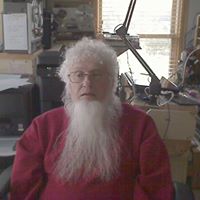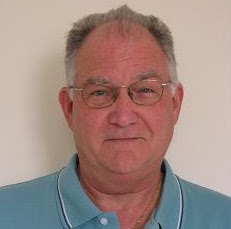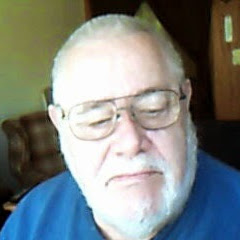John A Higbee
from Marco Island, FL
- Also known as:
-
- John Higbee
- John Margaret Higbee
- John Highbee
- John Fotelis
- Margaret Higbee
- Phone and address:
-
1610 Begonia Ct, Marco Island, FL 34145
2393946840
John Higbee Phones & Addresses
- 1610 Begonia Ct, Marco Island, FL 34145 • 2393946840
- 101 Pine St, West Hurley, NY 12491 • 8456796495
- 129 Pine St, West Hurley, NY 12491 • 8456796495
- Los Angeles, CA
- Newport, RI
- Bay Harbor Islands, FL
- Cortez, FL
Us Patents
-
Ultra Low Noise Optical Receiver
view source -
US Patent:55215556, May 28, 1996
-
Filed:Jul 25, 1994
-
Appl. No.:8/279509
-
Inventors:Daniel A. Tazartes - West Hills CA
John E. Higbee - Simi Valley CA
Jacque A. Tazartes - Beverly Hills CA
Juergen K. P. Flamm - Tarzana CA
John G. Mark - Pasadena CA -
Assignee:Litton Systems, Inc. - Woodland Hills CA
-
International Classification:H03F 308
-
US Classification:330308
-
Abstract:An amplifier topology for receiving signals output from a fiber optic rotation sensor and producing voltages that may be processed to determine the rotation rate includes a photodiode for receiving an optical signal and producing a corresponding electrical photodiode output signal. An ultra low noise and ultra low capacitance differential input stage is connected to receive the photodiode output signal. An operational amplifier having low noise and ultra-wide bandwidth is connected to the ultra low capacitance differential input stage to receive the output signal therefrom as a driving signal and to produce a low noise output signal. The differential input stage comprises a first amplifier circuit that includes a first transistor connected to the photodetector to act as a first buffer having low noise, low capacitance and unity gain. The first amplifier circuit also includes a second transistor configured as a first voltage follower connected between the output of the first buffer and the operational amplifier to isolate the output of the first buffer from parasitic capacitive loading from a biasing network. The differential input stage further comprises a second a second amplifier circuit that includes a third transistor having an input connected to a reference potential, the third transistor acting as a second buffer having low noise, low capacitance and unity gain.
-
Inductive Loop Detector System
view source -
US Patent:39433390, Mar 9, 1976
-
Filed:Apr 29, 1974
-
Appl. No.:5/465031
-
Inventors:Ralph J. Koerner - Canoga Park CA
Milton G. Bienhoff - Canoga Park CA
Martin C. Henderson - Canoga Park CA
John E. Higbee - Santa Susana CA
Steve J. Koerner - Van Nuys CA -
Assignee:Canoga Controls Corporation - Canoga Park CA
-
International Classification:G08G 1065
G08G 108 -
US Classification:235 92TC
-
Abstract:Apparatus for use in combination with multiple inductive loops for detecting metal objects, e. g. vehicles, in the immediate vicinity of each of said loops. Each loop may, for example, be a coil of wire buried in a roadway in a plane parallel to the roadway surface. A common oscillator circuit is operatively connected to each loop on a time shared basis with the frequency of oscillation at any time being determined by the inductance of the connected loop. The inductance in turn is dependent on whether or not a vehicle is over the loop. Successive scan cycles are defined with multiple loop phases occurring during each scan cycle. During each loop phase, a different one of the multiple loops is connected to the oscillator circuitry and during a "period measurement" portion of each loop phase, the loop frequency is monitored by digital circuitry including a loop counter which counts loop oscillator cycles and a duration counter which measures the time duration or period of a certain number of such loop oscillator cycles. The measured time duration (period) is then compared with an historical reference duration (accumulated over prior scan cycles) during a "calculation and storage" portion of each loop phase to ascertain whether the loop oscillator frequency has increased or decreased. The presence of a vehicle over the loop decreases loop inductance, increases loop frequency, and thus reduces the measured period.
Medicine Doctors

John Wilson Higbee
view sourceSpecialties:
Ophthalmology
Education:
The Ohio State University(1964)
Resumes

John Higbee
view source
John Higbee
view source
John Higbee
view sourceLocation:
United States
Flickr
Youtube
Classmates

John Higbee
view sourceSchools:
Wilson Area High School Easton PA 1958-1964
Community:
Keith Frankenfield

John Higbee, Edison Eleme...
view source
John Higbee, Holy Spirit ...
view source
John Higbee
view source
John Higbee
view source
John Higbee
view source
John Higbee
view source
John Higbee
view source
John Higbee
view source
John Higbee
view source
John Higbee
view sourceGoogleplus

John Higbee
Education:
Michigan State University - Political Science
About:
Retired Information Systems & Technology Executive
Bragging Rights:
On a personal mission to see as many of the cultures of the world as possible

John Higbee
Education:
Wilson hign school easton pa.

John Higbee
Myspace
Get Report for John A Higbee from Marco Island, FL













